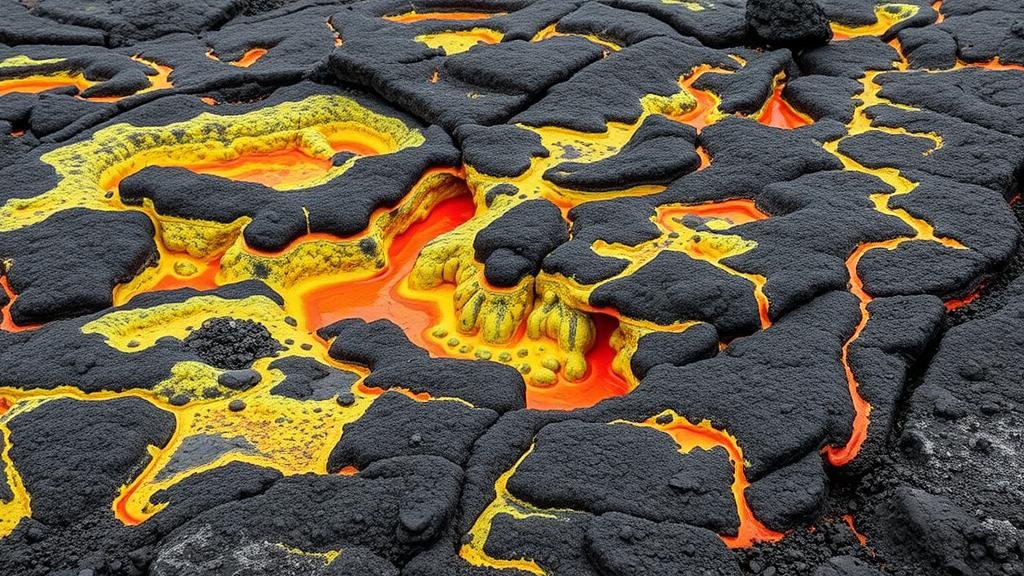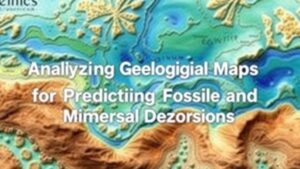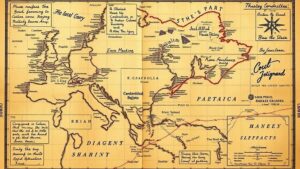Exploring USGS Volcano Data to Find Rare Mineral Deposits in Lava Flows
Exploring USGS Volcano Data to Find Rare Mineral Deposits in Lava Flows
The United States Geological Survey (USGS) plays a critical role in monitoring volcanic activity and providing vital geological data. Recent research focuses on identifying rare mineral deposits found in lava flows, which not only contributes to mineralogy but also has significant implications for resource management and environmental stewardship. This article explores the intersection of volcanic geology and mineralogy through an analysis of USGS volcanic data, highlighting both historical case studies and contemporary applications.
The Role of USGS in Volcanic Research
The USGS is responsible for studying and monitoring volcanic hazards in the United States, providing crucial data on volcanic activity. agency maintains a comprehensive database of volcanoes, which includes information on eruption history, geochemistry, and petrology. This data is instrumental for researchers who aim to understand the characteristics of volcanic rocks and the minerals they contain.
For example, the USGS Volcano Hazards Program involves the systematic collection of data from active volcanoes such as Mount St. Helens in Washington State and Kilauea in Hawaii. This data includes real-time monitoring of volcanic eruptions and analysis of lava flow compositions.
Rare Mineral Deposits in Lava Flows
Lava flows are not only geological phenomena but also potential sources of a variety of rare minerals. The crystallization process of lava can concentrate certain trace elements, leading to the formation of economically significant mineral deposits. Among the minerals commonly sought after in volcanic regions are olivine, zircon, and perlite.
Recent studies have shown that volcanic rocks are often rich in specific elements. For example, olivine deposits in Hawaiian lava flows are particularly rich in magnesium and iron, making them valuable for industrial applications, including the production of refractory metals. According to USGS data, an estimated 5% of all known olivine deposits in the world are found in lava flows across Hawaii (USGS, 2022).
Methodology: Analyzing USGS Data
To utilize USGS volcanic data in the search for rare mineral deposits, researchers use a combination of geological survey data, remote sensing imaging, and advanced mineralogical techniques such as X-ray fluorescence (XRF) and scanning electron microscopy (SEM). The process typically involves the following steps:
- Data Retrieval: Accessing the USGS National Volcano Database and geological maps.
- Field Sampling: Conducting site visits to collect rock samples from specific lava flows.
- Mineral Analysis: Utilizing laboratory techniques to identify and quantify mineral content.
- Data Modeling: Applying statistical models to predict locations of high mineral concentration within volcanic regions.
For example, a 2021 study examined lava samples from the 2018 Kilauea eruption that revealed high concentrations of rare earth elements, suggesting potential economic feasibility for extraction (Journal of Volcanology and Geothermal Research, 2021).
Case Studies and Findings
Mount St. Helens
The 1980 eruption of Mount St. Helens provided an unprecedented opportunity for mineral exploration. Geological surveys indicated the presence of zeolites within the erupted material. A study conducted by the USGS highlighted that the tephra (volcanic ash) contained multiple zeolite phases that could serve as important indicators of magma composition (USGS Circular 831, 1981).
Kilaueas 2018 Eruption
The recent eruptive activity at Kilauea has opened doors to a new understanding of the mineral resources embedded within lava flows. Detailed mineralogical analyses following the eruption indicated the presence of crystals rich in lithium, an essential component in battery technology. Researchers have begun to examine opportunities for sustainable extraction of these minerals, linking volcanic activity with emerging green technologies.
Challenges and Future Directions
Despite the promising prospects of exploiting rare mineral deposits in volcanic terrains, challenges persist. Environmental concerns regarding mining operations, community resistance, and the need for sustainable practices necessitate careful consideration. Further research is required to establish guidelines that balance mineral extraction with ecological preservation.
As technology advances, the integration of machine learning algorithms with geological data promises to enhance predictive modeling of mineral deposits in volcanic settings. By combining historical data with real-time monitoring, researchers can develop more sophisticated approaches to resource mapping.
Conclusion
Utilizing USGS volcano data to identify rare mineral deposits in lava flows represents a valuable intersection of geology and mining. insights obtained from volcanic studies not only contribute to our understanding of Earth’s geological processes but also provide a foundation for responsible resource exploitation. Policymakers, researchers, and industry stakeholders must collaborate to ensure that the pursuit of mineral wealth does not compromise environmental integrity while benefiting the economy.
In summary, the exploration of USGS volcanic data for mineral deposits offers significant opportunities, provided that careful management and innovative methodologies are employed to ensure sustainability and environmental protection.
Actionable Takeaway: For researchers and practitioners in geology and mining, staying informed about advancements in volcanic data analysis techniques will be crucial in maximizing the potential of these rare mineral resources while advocating for responsible environmental stewardship.



